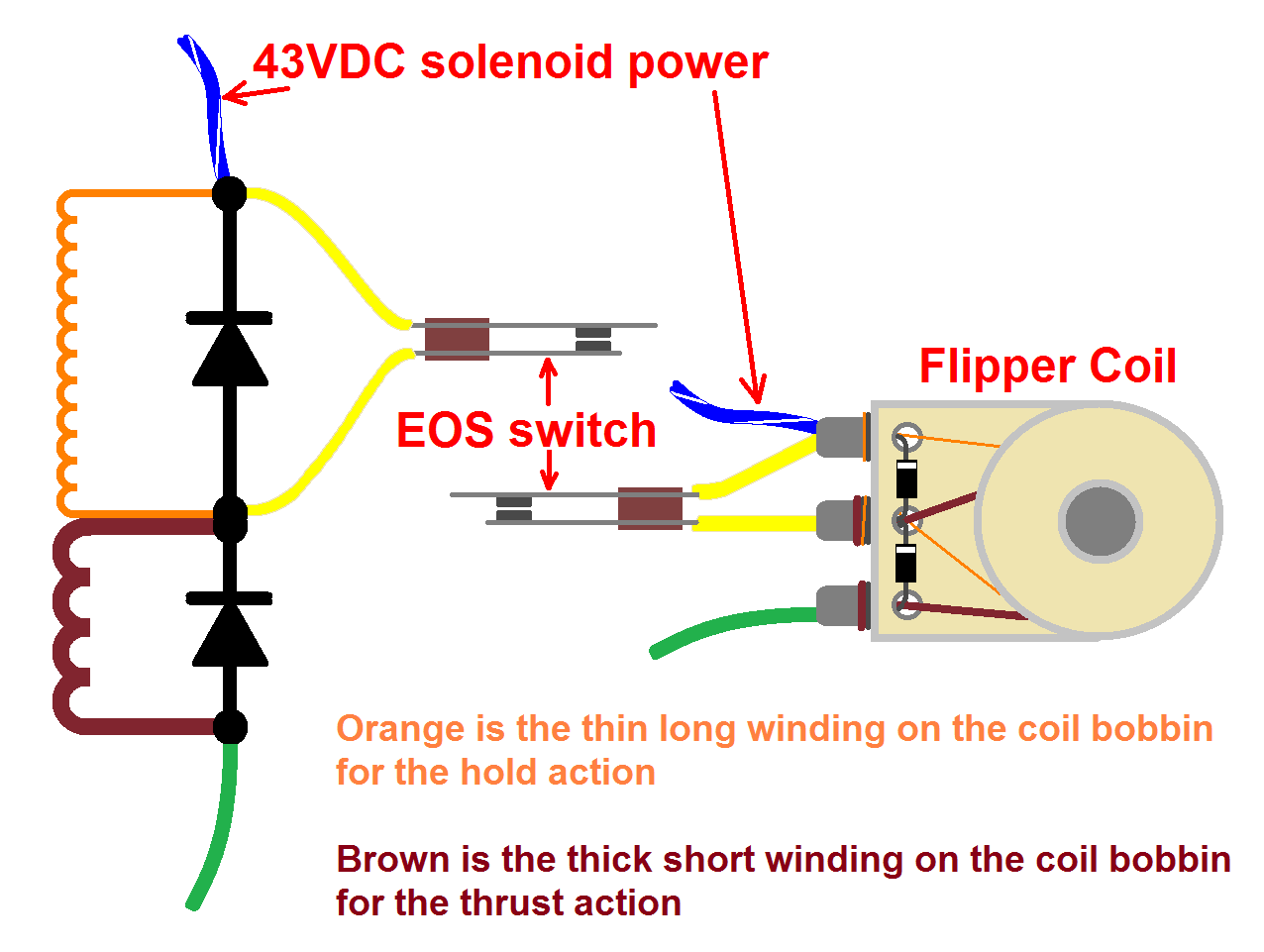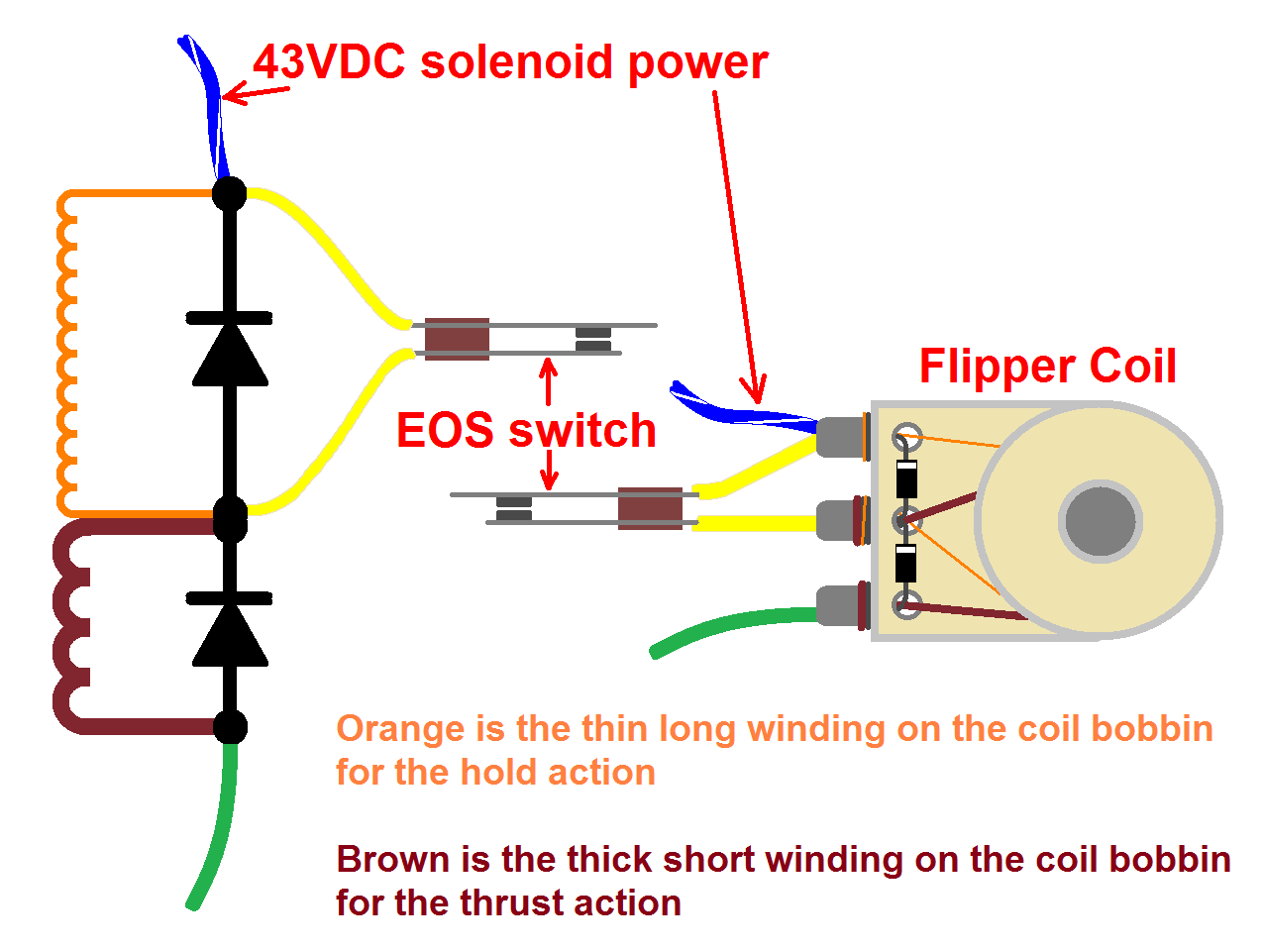Fluttering is caused by an open circuit in the "hold" winding on the flipper coil.
The flipper coil has two windings, one powerful to thrust the flipper, the other low power to hold the flipper up.
At idle, the EOS switch is closed which shorts out the hold (thin wire) winding on the flipper coil.
Player presses the flipper button, which causes full 43 volts to go through the thrust (thick wire) winding on the flipper coil.
The flipper reaches the end of the stroke and opens the EOS switch.
Opening the EOS switch now puts the hold winding in series with the thrust winding to hold the flipper in the up position with reduced power to prevent burnout.
However in your case the hold winding is open circuit so when the EOS switch opens, current through the total flipper coils collapses so the flipper falls back.
When it falls back enough it closes the EOS switch, which now re-energizes the thrust winding. After the EOS switch opens again the open circuit hold winding fails to hold the flipper in the up position and the flipper falls back again - rinse and repeat.
With the machine OFF, put a piece of paper between the EOS switch so it no longer makes contact and measure the resistance across the two yellow wires on the flipper coil lugs. You should measure around 320 ohms.





